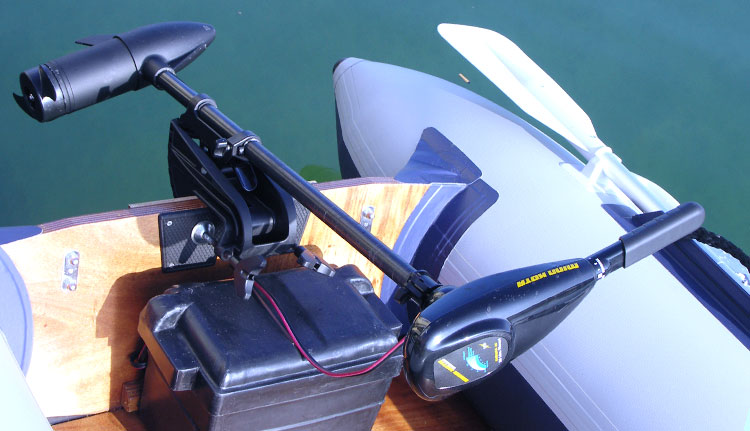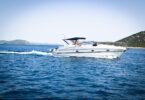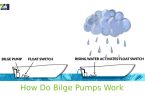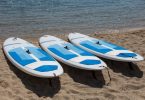A trolling motor is a stimulating motor with propeller and controls. Trolling motors are realistic for both freshwater and saltwater angling. It very well may be mounted on three best places for example on the transom, on the bow and on the motor itself.
A trolling motor works on the rule of electromagnetic acceptance. Trolling motors can also work more slowly than the classic fuel motor. With the increasing demand for an assortment of shaft sizes, manufacturers are offering powerful trolling motors. Therefore, these motors can be utilized on huge and small boats and for various applications.
Understanding the Basics of a Trolling Motor
Like every other motor is known, a trolling motor is not different in terms of its basic and fundamental parts like the shaft, thrust, control, propeller, motor, battery charger, and the terminal end.
Parts of a Trolling Motor
Now let us take a look at the parts of the trolling motor one after another and explain the function of them all.

1. Motor
It is the primary piece of the trolling motor associated with driving the boat.
2. Propeller
The propeller looks like a fan and it is attached to the motor. There is a whole other world to propellers than numerous individuals acknowledge, and PC demonstrating is quickly promoting their advancement. The one key estimation on a propeller is pitch; pitch is estimated by the separation in inches the propeller would travel or turn through a strong after one full upset.
The expanded pitch will result in more prominent top speed, however, it will bring down the greatest RPMs. The lower the prop pitch is, the snappier the increasing speed you have as the prop slices through the water all the more proficiently, however the lower the top speed you will accomplish.
3. Shaft
The shaft is a long stanch that house the controls. The extent of the shaft decides the dimension of control you have over the boat. You will need to strike a harmony between a short and long shaft for ideal execution. A shaft that is too short will not move also, and it will finish up making commotion that could conceivably drive off fish.
The standard length of the shaft is 42 inches. To choose the correct length for your boat, measure the separation from the mounting point of the shaft to the deck or the transom to the water.
If the shaft is excessively long, you will keep running into issues when looked with shallow water. So, you should know how to choose a trolling motor that features the correct shaft size to guarantee a lighthearted and safe boating trip.
4. Controls
The controls come in 3 dimensions. Those include a control with your hand or your feet, just as the top of the line motors that include electronic controls.
- Hand tiller
- Foot pedal
- Remote control
Foot controlled motors do not react as fast as the hand-controlled assortment, and they additionally add mess to your boat. This is the reason why most paddlers pick a hand-tiller glide for their kayaks.
Hand-controlled motors likewise offer ongoing power over the motor, so you will have the capacity to work one with better accuracy. Electronic motors enable you to control each part of the motor from a remote control. Actually, it resembles a certain degree to a computer game controller. These motors have the most progressive highlights accessible and are extensively more costly than hand or foot-pedal motors.
5. Power Readers
It has the terminal ring battery connectors. The power reader is a basic yet an irreplaceable component that you will presumably need to search for in your next trolling motor. This indicator is normally situated on or close to the handle of the motor, and let you know how much power you have left before you have to charge your batteries.
Except if you are energized by the possibility of coming up short on power a mile from shore, you will need to select a motor that incorporates this component.
6. Batteries
With regards to driving your trolling motor, it is vital to choose a deep cycle battery (often confused with marine batteries). Deep Cycle batteries are intended to control gadgets by discharging put away vitality gradually over significant lots, enabling them to be totally released and completely energized without harming the battery.
The battery used will solely depend on the voltage of the trolling motor, that been said there are 3 kinds of battery used;
- 12 Volts
- 24 Volts
- 36 Volts
If you have a 12-Volt motor, you will need one 12-Volt marine battery to operate it. If you have a 24-Volt motor, you will require two 12-Volt batteries. As you will envision, you will require three 12-Volt batteries for the 36-Volt motors.
For most kayaks, a 12v motor gives all that anyone could need the capacity to take care of business. For bigger vessels, 24v and 36v motors are favored.
7. Terminal Ends
It is utilized as battery connectors to join on motor power leads of the battery.
8. Battery Charger
It is required to revive the trolling motor batteries after use.
9. A Few Fundamental Aspects to Understand
In this section, we will take a dive into the fundamentals.
10. Thrust
Thrust control alludes to the power the motor needs to produce to move the boat through the water. It is important that the motor you pick has enough thrust power for the span of your boat. When in doubt, your kayak most likely needs around 30 pounds of thrust control for the motor to work legitimately.
11. Mounting options
The main thing you should fret about is the means by which the motor mounts to the boat. Bow motors mount to the front of the boat, and they haul the boat through the water. These motors are generally increasingly amazing and give expanded versatility and control.
Transom mount motors are the most prevalent style for kayaks. These motors mount on the back of the boat, and they push the vessel through the water. These motors are somewhat less groundbreaking and harder to control.
12. Control
The control is pretty much in 3 different ways;
- The hand-controlled
- The foot controlled
- The remote controlled
13. Speed Settings
The majority of the trolling motors accompany an assortment of paces. Also, they can operate in the switch and forward motion. Great motors will, in general, incorporate eight paces (5 forward and 3 inverts), however, you will discover motors that are considerably progressively flexible at a more expensive rate.
For most fishermen, an 8-speed motor gives all that anyone could need adaptability to their requirements.
So, How Does a Trolling Motor Work?
The big question still remains, how does a trolling motor work? Do not worry, your curiosity will be satisfied in this section.
Some trolling motors come with handles that are suitable for easy control. You control it by hands and easily twirl the motor right or left, forward or in reverse. Some trolling motors include exceptional foot controls. A portion of these components is connected to the motor as well as others are remote, yet the two assortments enable clients to direct the motor utilizing just their foot. By means of applying weight to one part of the power exerted by your foot, for instance, the motor swings to one side.
While the motor is in control, a propeller at the base of the glide twists in the water. It is the means by which trolling motors drive boats. In the case of trolling motors include a grip or foot control, clients can choose how much capacity they want to transfer to the propeller. A stronger motor will react quickly. As a result, the prop turns fast and the boat moves quickly as well.
The different elements that impact the momentum and size of these motors include the amount and length of the edges on the propeller, kayaker’s bodyweight, climate conditions like breeze, and water circumstances like bearing. Regardless of the conditions, however, the more run the propeller pushes, the quicker the vessel moves.
Conclusion
Hopefully, with this well-sorted guide, you will be able to make that decision on which trolling motor you should buy and most importantly that bugging question of how do trolling motor works is answered now.








Leave a Comment